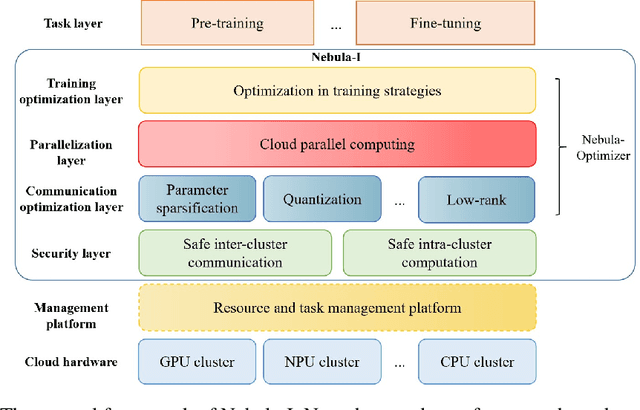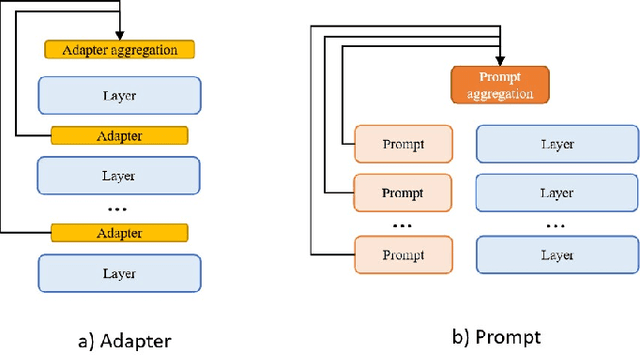Yaqian Han
X-PuDu at SemEval-2022 Task 6: Multilingual Learning for English and Arabic Sarcasm Detection
Nov 30, 2022Abstract:Detecting sarcasm and verbal irony from people's subjective statements is crucial to understanding their intended meanings and real sentiments and positions in social scenarios. This paper describes the X-PuDu system that participated in SemEval-2022 Task 6, iSarcasmEval - Intended Sarcasm Detection in English and Arabic, which aims at detecting intended sarcasm in various settings of natural language understanding. Our solution finetunes pre-trained language models, such as ERNIE-M and DeBERTa, under the multilingual settings to recognize the irony from Arabic and English texts. Our system ranked second out of 43, and ninth out of 32 in Task A: one-sentence detection in English and Arabic; fifth out of 22 in Task B: binary multi-label classification in English; first out of 16, and fifth out of 13 in Task C: sentence-pair detection in English and Arabic.
ERNIE-UniX2: A Unified Cross-lingual Cross-modal Framework for Understanding and Generation
Nov 09, 2022Abstract:Recent cross-lingual cross-modal works attempt to extend Vision-Language Pre-training (VLP) models to non-English inputs and achieve impressive performance. However, these models focus only on understanding tasks utilizing encoder-only architecture. In this paper, we propose ERNIE-UniX2, a unified cross-lingual cross-modal pre-training framework for both generation and understanding tasks. ERNIE-UniX2 integrates multiple pre-training paradigms (e.g., contrastive learning and language modeling) based on encoder-decoder architecture and attempts to learn a better joint representation across languages and modalities. Furthermore, ERNIE-UniX2 can be seamlessly fine-tuned for varieties of generation and understanding downstream tasks. Pre-trained on both multilingual text-only and image-text datasets, ERNIE-UniX2 achieves SOTA results on various cross-lingual cross-modal generation and understanding tasks such as multimodal machine translation and multilingual visual question answering.
Nebula-I: A General Framework for Collaboratively Training Deep Learning Models on Low-Bandwidth Cloud Clusters
May 19, 2022



Abstract:The ever-growing model size and scale of compute have attracted increasing interests in training deep learning models over multiple nodes. However, when it comes to training on cloud clusters, especially across remote clusters, huge challenges are faced. In this work, we introduce a general framework, Nebula-I, for collaboratively training deep learning models over remote heterogeneous clusters, the connections between which are low-bandwidth wide area networks (WANs). We took natural language processing (NLP) as an example to show how Nebula-I works in different training phases that include: a) pre-training a multilingual language model using two remote clusters; and b) fine-tuning a machine translation model using knowledge distilled from pre-trained models, which run through the most popular paradigm of recent deep learning. To balance the accuracy and communication efficiency, in Nebula-I, parameter-efficient training strategies, hybrid parallel computing methods and adaptive communication acceleration techniques are jointly applied. Meanwhile, security strategies are employed to guarantee the safety, reliability and privacy in intra-cluster computation and inter-cluster communication. Nebula-I is implemented with the PaddlePaddle deep learning framework, which can support collaborative training over heterogeneous hardware, e.g. GPU and NPU. Experiments demonstrate that the proposed framework could substantially maximize the training efficiency while preserving satisfactory NLP performance. By using Nebula-I, users can run large-scale training tasks over cloud clusters with minimum developments, and the utility of existed large pre-trained models could be further promoted. We also introduced new state-of-the-art results on cross-lingual natural language inference tasks, which are generated based upon a novel learning framework and Nebula-I.
Breaking the Data Barrier: Towards Robust Speech Translation via Adversarial Stability Training
Oct 28, 2019



Abstract:In a pipeline speech translation system, automatic speech recognition (ASR) system will transmit errors in recognition to the downstream machine translation (MT) system. A standard machine translation system is usually trained on parallel corpus composed of clean text and will perform poorly on text with recognition noise, a gap well known in speech translation community. In this paper, we propose a training architecture which aims at making a neural machine translation model more robust against speech recognition errors. Our approach addresses the encoder and the decoder simultaneously using adversarial learning and data augmentation, respectively. Experimental results on IWSLT2018 speech translation task show that our approach can bridge the gap between the ASR output and the MT input, outperforms the baseline by up to 2.83 BLEU on noisy ASR output, while maintaining close performance on clean text.
 Add to Chrome
Add to Chrome Add to Firefox
Add to Firefox Add to Edge
Add to Edge